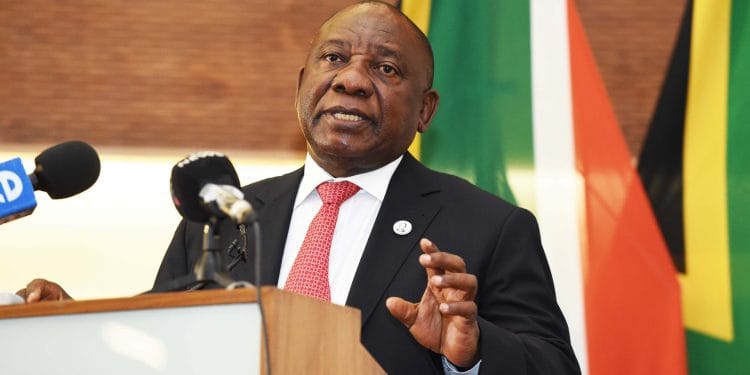
A SONA with too many plans?
The President delivered his State Of the Nation Address (SONA) on the 20th of June; the second one this year. As the South African tradition goes, the state of the nation is dismal. People are living in poverty, they don’t have jobs, inequality does not seem to be letting up, and the economy is just not providing the type of growth which is needed to address these social ills.
Though there was some repetition from what was presented in the February SONA earlier this year, the President added some additional goals. Goals which can only be described as severely modest. Though I will not go into all of them here, I do want to address a very important economic issue, which the President referred to as a “crisis”, but which is not being treated as a crisis at all. That is the problem of unemployment.
Unemployment has plagued our nation since the end of apartheid, a time when people thought they would now be able to pursue their most ambitious dreams as free citizens. Though for some this did become a reality, for the majority of South Africans not much has changed from the poverty and squalor in which they lived then. For many, these poor conditions have been inherited by their descendants, almost like a type of a generational curse.

As research in the field of unemployment has grown, thankfully due to the increasing availability of data and the continued funding of our research centres and higher education institutions, we have come to learn a lot about unemployment, not only in our country, but also in others. We have learnt that unemployment, poverty, and inequality are good friends. Unemployment has been linked to crime (1,2), and puts a heavy burden on our social security system (3) – a system which is for the most part not designed to be supporting able-bodied individuals of working age, but the most vulnerable in our society; children, the elderly, and those living with disabilities.
Despite identifying unemployment as a crisis, our government does not treat unemployment as an issue which exacerbates and causes other social ills, nor has it demonstrated an ability to streamline solutions and essentially kill two (or more) birds with one stone. What we have seen time and again is the government trying to devise a policy or programme for each one of our problem areas without any regard for how these can be integrated to solve more than one problem at a time.
The President’s seven priority areas are a case in point. Three of the (seven) priorities he mentioned include economic transformation and job creation, education, skills and health, and social cohesion and safe communities. Although he did not provide any detail about how each of these will be addressed, surely all of these can be addressed under the banner of a single problem? It is unthinkable, for instance, that you can build social cohesion in a climate of high inequality, or build a capable health system with such an unequal distribution of resources and skills between the public and private health sectors. Similarly, job creation, education, and safe communities go hand-in-hand.
Countries which have managed to attain significant economic growth using more focused strategies include Costa Rica, who embarked on an export-oriented approach which promoted the attraction of foreign direct investment (4). Similarly, South Korea undertook a path to development through the promotion of exports (albeit under an authoritarian regime) (5). Though these single factors alone did not lead to development, every other policy or government initiative was geared towards making their chosen strategy a success. For instance, institutions were geared toward attracting the necessary investment needed to grow export industries. Human capital development (education and training) was geared toward ensuring that those industries had the necessary labour needed with which to grow them.
The point is, we seem to have too many irons in the fire, and this is likely to continue the problem we have of government departments working in isolation to address all these issues. The cabinet needs to come together and decide on a single goal (or a few at the most, not seven!) and decide how each minister’s portfolio needs to contribute to that goal. In my view, our most pressing issue is in fact unemployment. It affects too many citizens, both directly and indirectly, and is linked to numerous other social ills. It is a problem which requires an immediate solution, not a modest target of 2 million jobs over 10 years. We need action now, otherwise we may have too many fires (literally and figuratively) to put out in the near future.
References
1. Levinsohn J, Rankin N, Roberts G, Schöer V. Wage subsidies and youth employment in South Africa: Evidence from a randomised control trial [Internet]. Stellenbosch; 2014. (Stellenbosch Economic Working Paper Series). Report No.: 2. Available from: http://siteresources.worldbank.org/INTDEVIMPEVAINI/Resources/3998199-1286435433106/7460013-1357765223620/Gareth_Roberts_Presentation.pdf
2. Branine M, Glover I. Ageism in work and employment: thinking about connections. Pers Rev [Internet]. 1997;26(4):233–44. Available from: http://www.emeraldinsight.com/doi/10.1108/00483489710172042
3. Klasen S, Woolard I. Surviving unemployment without state support: Unemployment and household formation in South Africa. J Afr Econ. 2009;18(1):1–51.
4. Filipe G, Ferreira C, Antonio P, Fuentes G, Pablo J. The successes and shortcoming of Costa Rica exports diversification policies [Internet]. Rome; 2018. Available from: www.fao.org/publications
5. Rodrik D. Getting interventions right: How South Koreaand Taiwan grew rich. Cambridge; 1994. (NBER Working Paper Series). Report No.: 4964.
Originally posted on 16 July 2019




